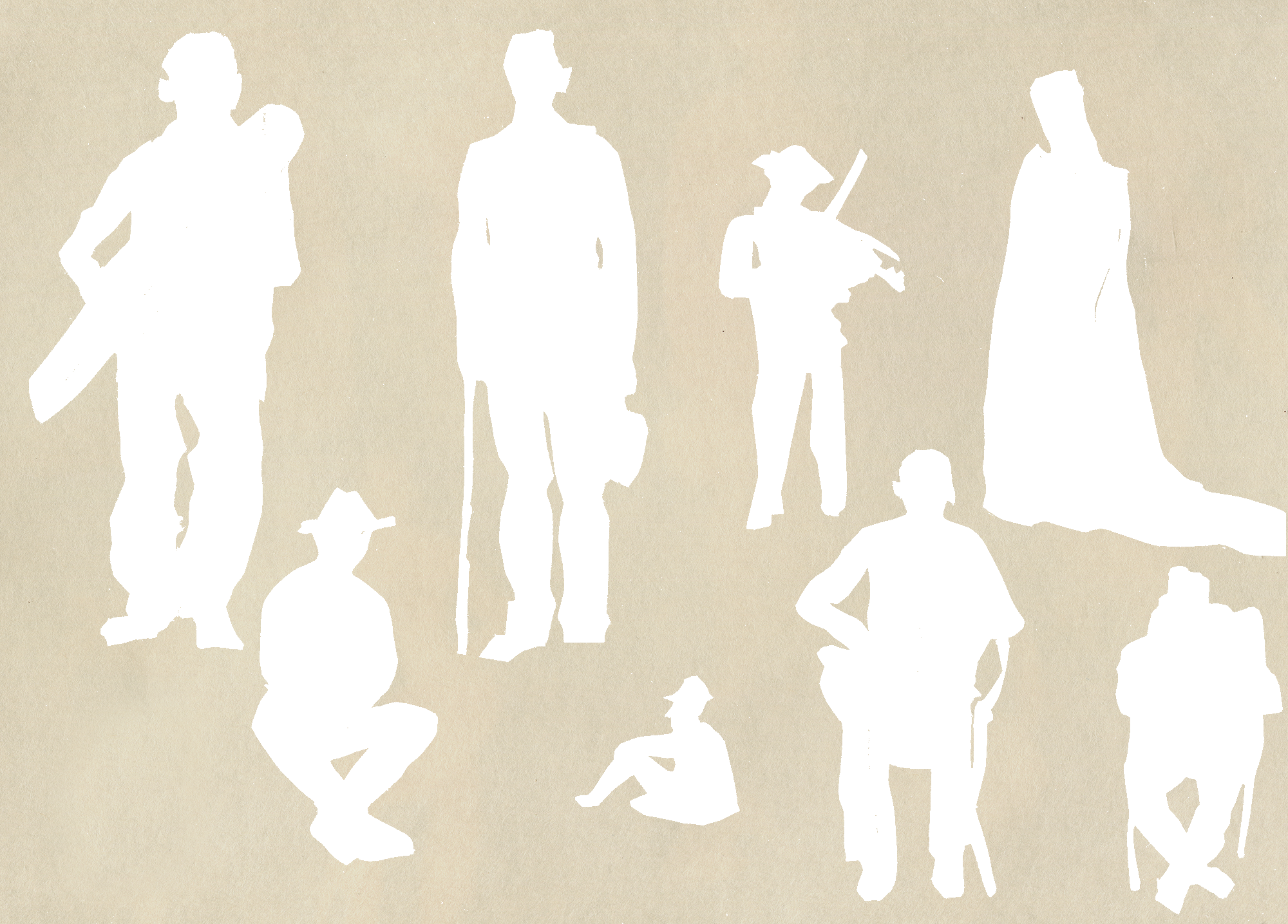-
i.Artwork
-
ii.Exhibitions
-
iii.Publications
-
iv.About
-
v.Contact
-
vi.Index of Works
Maia is a recipient of the Nancy Graves Grant, Art Matters Grant, Joan Mitchell Foundation Painters & Sculptors Grant, Jerome Foundation Travel and Study Program Grant, Rema Hort Mann Foundation Emerging Artist Grant, NYFA Painting Fellowship, Joan Mitchell Foundation MFA Award and the Astraea Visual Arts Fund Award. Maia received an MFA in sculpture from Brooklyn College, City University of New York and BA in Studio Art at Mount Holyoke College, Massachusetts and has participated in residencies at Skowhegan School of Painting and Sculpture, Maine, Lower East Side Print Shop, New York, Millay Colony, New York and the Joan Mitchell Center, New Orleans. They are a recipient of the 2022-23 Sharpe Walentas Studio Program in Brooklyn, New York.
In 2017, at Chicago’s Newberry Library, I researched Damián Domingo’s watercolor album, Isabelo De los Reyes’ El Folk-lore Filipino, and the Dean C. Worcester photographic archive. The Worcester archive was commissioned by the US government to document the imperialist project of William McKinley’s “Benevolent Assimilation” and Rudyard Kipling’s “White Man’s Burden”. Together, these sources presented an image of Filipinos constructed through native eyes and through the eyes of the other.
I was drawn to the people in the pictures and felt the impulse to remove them from this historical framework. With the detailed and loving care of Domingo’s watercolors in mind, I drew figures, plants, and other elements from the archive. Then, I cut out each drawing, creating a new library of cutouts: people, animals, foliage, moons, and mountains. The pieces were then placed in various arrangements and recorded via graphite rubbings. This process allowed for the cutouts to be combined into potentially infinite visual narratives and led to the generation of full color oil paintings.
Improvisation through color and composition mimic the spontaneous manner in which oral histories are recounted. Figures mingle with specters with defiance and gentleness. In contrast to the heavily captioned US photographic archive in which a westerner claims a singular narrative about a group of people, these paintings seek to resist such categorization, with agency, without explanations or captions.
Watch: Maia Cruz Palileo: Becoming the Moon
In the Making, American Masters, A documentary short film by Ligaiya Romero
Click here for CV
BOMB Magazine — Maia Cruz Palileo by Melissa Joseph
Observer — Maia Cruz Palileo Reveals Invisible Stories of American Filipino Heritage at David Kordansky
FRIEZE — Works in Progress: Maia Cruz Palileo
Art News — David Kordansky Gallery Takes on Rising Painter Maia Cruz Palileo
Plus Magazine — Maia Cruz Palileo Painting the Opaque Rendering Desire
The Modern Art Notes Podcast — Episode No. 614: 1898, Maia Cruz Palileo
Cerebral Women Podcast — Episode 152: Maia Cruz Palileo
Sixty Inches From Center — Days Later, Down River: The Path to Follow
Office Magazine — I See Myself in You
Newcity Art — Cross-Cultural Historical Perspectives With a Side of Magical Realism
Surging Tide —Interview with Maia Cruz Palileo
High Snobiety —11 Artists We Have Our Eyes On at This Year's Miami Beach Expo
Artsy — The 10 Best Booths at Art Basel in Miami Beach 2022
Art Review — Larry Ossei-Mensah: Art Surviving Imperialism
Dazed — This exhibition confronts the legacy of British colonialism
University of Michigan College of Literature, Science, and the Arts Magazine — Mending a History of Harm
Artsy — Artists Are Reimagining the Family Portrait to Be More Inclusive
San Francisco Chronicle — Maia Cruz Palileo's solo show weaves personal background with colonial history of Philippines
Panorama Journal of the Association of Historians of American Art — Un-Disciplining the Archive: Jerome Reyes and Maia Cruz Palileo
Artsy — 16 Rising Artists of the Asian Diaspora in the United States
The New Criterion — Second City Views
SSENSE — The Past is Proof
Hyperallergic — Best of 2019: Our Top 20 United States Art Shows
Artnet News — Fresh Paint: Seven Artists on the Rise
Hyperallergic — Untethering Filipino History From American Exceptionalism
L’Officiel — Claiming A Seat At The Table
Art in America — Maia Cruz Palileo
New American Painting — Personal Stars: Maia Cruz Palileo at Monique Meloche Gallery
New Art Examiner — Maia Cruz Palileo: “All The While I Thought You Had Received This”
Art Forum — Maia Cruz Palileo on memory and myth
Document Journal — Finding my Filipino identity in Maia Cruz Palileo's Art
Forbes — Smaller Museums And Galleries Shining In Chicago's Flourishing Arts Scene
ARTnews — Joan Mitchell Foundation Names Recipients of 2018 Painters & Sculptors Grants
ARTnews — Maia Cruz Palileo at Taymour Grahne, London
The Studio Visit — Maia Cruz Palileo
Art Forum — Critic’s Picks
Financial Times — Beautiful imagery from an ugly past: Maia Cruz Palileo, Pioneer Works, Brooklyn
All Arts: WLIW New York Public Media — Ancestral Stories: Maia Cruz Palileo at Pioneer Works
Artnet News — Editors’ Picks: 15 Art-World Attractions to Seek Out in New York This Week
Hyperallergic — Your Concise New York Art Guide for Spring 2018Your list of 45 must-see, fun, insightful, and very New York art events this season.
New American Paintings — Northeast Issue #134
Podcast — Magic Praxis, Chitra Ganesh with Maia Cruz Palileo
World Literature Today — Special Section Philippine-American Lit
World Literature Today — Migration, Home, and History Through the Eyes of Philippine-American Artists
Pride Life — FOR US BY US
The American Scholar — Portrait of the Artist: Generational Juxtaposition
The Studio Visit — Kimo Nelson and Maia Cruz Palileo
Apogee Journal — Don't Forget Us: An Interview with Maia Cruz Palileo
The L Magazine — 5 Brooklyn Artists You Need to Know
Brooklyn Magazine — Inside the Artist's Studio
The Paris Review — Lost Looking
The New York Times — Support From a Love Sprite and Some Fractured Friends
